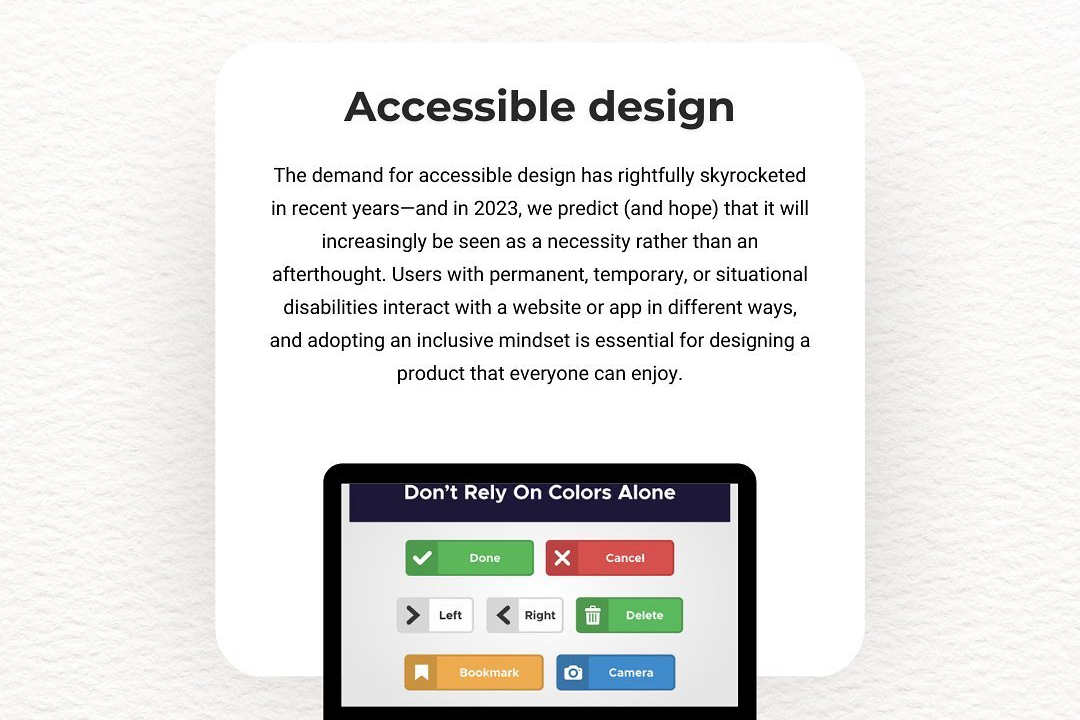best MANUAL TESTING BLOGS
The best manual testing blogs provide comprehensive insights and resources for quality assurance (QA
best MANUAL TESTING BLOGS
The best manual testing blogs serve as invaluable resources for quality assurance professionals by providing a wealth of knowledge on testing methodologies, tools, and industry trends. They offer practical insights, tips, and real-world case studies that enhance testers' understanding and skills in manual testing. These blogs cover essential topics such as test case design, defect management, and effective testing strategies, making them useful for both beginners and seasoned testers. By staying updated with the latest advancements and best practices in the field, QA professionals can optimize their testing processes and contribute to the quality of software products more effectively.
To Download Our Brochure: https://www.justacademy.co/download-brochure-for-free
Message us for more information: +91 9987184296
The best manual testing blogs serve as invaluable resources for quality assurance professionals by providing a wealth of knowledge on testing methodologies, tools, and industry trends. They offer practical insights, tips, and real world case studies that enhance testers' understanding and skills in manual testing. These blogs cover essential topics such as test case design, defect management, and effective testing strategies, making them useful for both beginners and seasoned testers. By staying updated with the latest advancements and best practices in the field, QA professionals can optimize their testing processes and contribute to the quality of software products more effectively.
Course Overview
The “Best Manual Testing Blogs” course offers an in-depth exploration of the most insightful and informative blogs dedicated to manual testing practices. Participants will learn about essential topics such as test case design, bug reporting, and testing methodologies, drawing from the expertise shared by industry leaders and professionals. This course not only highlights the value of staying up-to-date with current trends and innovations in quality assurance but also equips learners with practical tips and strategies that can be immediately applied in their testing roles. By the end of the course, students will have a curated list of blogs to follow, enhancing their knowledge and proficiency in manual testing, ultimately contributing to the overall quality of software development projects.
Course Description
The “Best Manual Testing Blogs” course is designed to guide learners through a curated selection of top blogs that focus on manual testing methodologies, best practices, and industry insights. This course will cover essential topics such as test case creation, defect management, and the latest trends in software quality assurance. Participants will explore articles from renowned experts, gaining valuable knowledge that can be directly applied to real-world projects. By engaging with this content, learners will enhance their understanding of manual testing, improve their skills, and stay updated with the evolving landscape of software testing, ultimately contributing to their professional growth and the success of their organizations.
Key Features
1 - Comprehensive Tool Coverage: Provides hands-on training with a range of industry-standard testing tools, including Selenium, JIRA, LoadRunner, and TestRail.
2) Practical Exercises: Features real-world exercises and case studies to apply tools in various testing scenarios.
3) Interactive Learning: Includes interactive sessions with industry experts for personalized feedback and guidance.
4) Detailed Tutorials: Offers extensive tutorials and documentation on tool functionalities and best practices.
5) Advanced Techniques: Covers both fundamental and advanced techniques for using testing tools effectively.
6) Data Visualization: Integrates tools for visualizing test metrics and results, enhancing data interpretation and decision-making.
7) Tool Integration: Teaches how to integrate testing tools into the software development lifecycle for streamlined workflows.
8) Project-Based Learning: Focuses on project-based learning to build practical skills and create a portfolio of completed tasks.
9) Career Support: Provides resources and support for applying learned skills to real-world job scenarios, including resume building and interview preparation.
10) Up-to-Date Content: Ensures that course materials reflect the latest industry standards and tool updates.
Benefits of taking our course
Functional Tools
1 - Selenium: Selenium is a widely used open source automated testing framework primarily for web applications. Although the course focuses on manual testing, understanding Selenium's functionality can enhance manual testers' perspectives on how automated processes work. Students will learn how Selenium can be integrated into manual testing workflows, assisting them in identifying limitations and capabilities. Knowledge of Selenium equips students with insights into automation, allowing them to communicate effectively with automation teams and understand both manual and automated testing processes.
2) JIRA: JIRA is a project management tool that is essential for tracking issues and bugs in software development projects. In the course, students will be introduced to JIRA’s features such as issue tracking, sprint planning, and reporting. By learning how to effectively document and track defects, students become proficient in maintaining transparency and organization in the testing phase. Familiarity with JIRA also prepares learners for collaborative work environments, making it easier to communicate with team members and stakeholders regarding project progress and testing outcomes.
3) TestRail: TestRail is a web based test case management tool that allows teams to organize, manage, and track testing efforts. The course will cover how to create and manage test cases, plan test runs, and generate reports. Understanding TestRail equips students with valuable skills in organizing their testing processes and analyzing test results effectively. This tool enhances students’ abilities to manage workflows and improves their efficiency in executing test plans. Proficiency in TestRail will also provide learners with a competitive edge in the job market, as many organizations utilize this tool.
4) Postman: Postman is a collaboration platform for API development that simplifies the process of designing, testing, and documenting APIs. While manual testing typically emphasizes UI and functional testing, knowledge of API testing is becoming increasingly relevant. In the course, students will learn how to utilize Postman to send requests, validate responses, and test the functionality of web services. By understanding API testing basics, students can broaden their testing skill set and enhance their overall effectiveness in ensuring quality across different application layers.
5) Bugzilla: Bugzilla is an open source bug tracking system that helps manage and track defects in software. Throughout the course, students will gain hands on experience using Bugzilla to report and manage bugs, understanding its interface and functionalities. Learning how to leverage Bugzilla will enable students to document issues thoroughly and track their resolution efficiently. This tool also aids in improving communication within the testing team by allowing easy access to bug reports. Proficiency in Bugzilla enhances students’ capabilities in managing the testing lifecycle from defect identification to resolution.
6) Microsoft Excel: While it may seem basic, Microsoft Excel remains a powerful tool for manual testers in managing test cases, logging defects, and analyzing test results. The course will include training on how to create comprehensive test case documents using Excel, tracking testing progress, and performing simple data analysis. Excel’s versatility allows testers to maintain structure in documentation and facilitates easy reporting of testing metrics. Mastery of Excel equips students with fundamental skills that every manual tester should possess, especially in smaller teams or projects where dedicated tools might not be available.
Additional Tools for Manual Testing Training
1 - TestLink: TestLink is an open source test management tool that enables teams to create test cases, manage requirements, and track testing progress. In this course, students will learn how to set up projects, create and manage test cases, and associate them with specific requirements. Knowledge of TestLink helps testers streamline their testing activities and ensures that all requirements are thoroughly tested and documented. This skill set enhances efficiency and provides a structured approach to managing testing efforts.
2) MantisBT: Mantis Bug Tracker (MantisBT) is another open source bug tracking system widely used by software development teams. The course includes practical exercises in reporting issues and tracking their status within MantisBT. Students will learn how to prioritize bugs based on severity and impact, facilitating better communication among team members and improving the overall bug resolution process. Familiarity with MantisBT equips students to work effectively in environments that utilize this tool for tracking software defects.
3) Quality Center (ALM): Micro Focus Quality Center, also known as Application Lifecycle Management (ALM), is a comprehensive test management tool that supports the management of software testing processes. During the course, students will familiarize themselves with its features, including requirement management, test case creation, and defect tracking. Understanding Quality Center empowers students to oversee aspects of the testing lifecycle, ensuring that quality assurance aligns with overall project goals and objectives.
4) SoapUI: SoapUI is a popular tool for testing web services and APIs. This course segment will introduce students to functional and load testing using SoapUI. They will learn how to create test cases for both REST and SOAP services, validate responses, and analyze performance metrics. Skills in SoapUI provide manual testers with the capability to not only test the front end but also validate the underlying API behavior, ensuring a comprehensive testing approach.
5) LoadRunner: LoadRunner is a performance testing tool widely used to determine system behavior and performance under load. While the primary focus is on manual testing, the course will introduce students to LoadRunner’s capabilities for understanding system performance and identifying potential bottlenecks. This understanding is crucial for any software tester, as it directly impacts user satisfaction and product quality.
6) Git: Git, a version control system, is essential for managing code changes. While it is predominantly used by developers, manual testers also benefit from understanding Git workflows. In this course, students will learn how to utilize Git to collaborate on test documentation, maintain version control for test scripts, and track testing activities. Familiarity with Git enhances testers' ability to work in agile environments, promoting better collaboration among development and testing teams.
7) Mind Mapping Tools (e.g., XMind, MindMeister): Mind mapping tools support brainstorming and organizing thoughts related to testing strategies, test case design, and project planning. During the course, students will explore how to use mind maps to visualize testing workflows and track testing coverage. This skill promotes creativity in test planning and allows for effective structuring of complex testing scenarios.
8) Zephyr: Zephyr is a comprehensive test management tool that integrates seamlessly with JIRA. In this course, students will learn how to create, manage, and report on test cases within Zephyr, allowing them to link test execution results to JIRA issues. Gaining expertise in Zephyr enables manual testers to have a holistic view of testing efforts and project health, enhancing their ability to manage testing processes efficiently.
9) Google Sheets: Like Microsoft Excel, Google Sheets is a cloud based spreadsheet tool that facilitates collaboration. The course will teach students how to use Google Sheets for test case documentation, defect tracking, and team collaboration. Using Google Sheets enhances flexibility and accessibility, allowing teams to work together in real time, regardless of their physical location.
10) Rally (now CA Agile Central): Rally is an agile project management tool that allows teams to plan, prioritize, and track work. In this course, students will discover how to integrate testing workflows with Agile methodologies utilizing Rally. Understanding Rally fosters a better grasp of managing testing efforts in an Agile context, ensuring that testing aligns with sprint goals and project timelines.
By mastering these tools, students will not only strengthen their manual testing capabilities but also enhance their communication and collaboration skills, making them valuable assets to any development team. With JustAcademy's comprehensive training, learners will emerge as well rounded professionals equipped to tackle real world testing challenges.
Browse our course links : https://www.justacademy.co/all-courses
To Join our FREE DEMO Session:
This information is sourced from JustAcademy
Contact Info:
Roshan Chaturvedi
Message us on Whatsapp: +91 9987184296
Email id: info@justacademy.co
Manual Testing Course Syllabus












